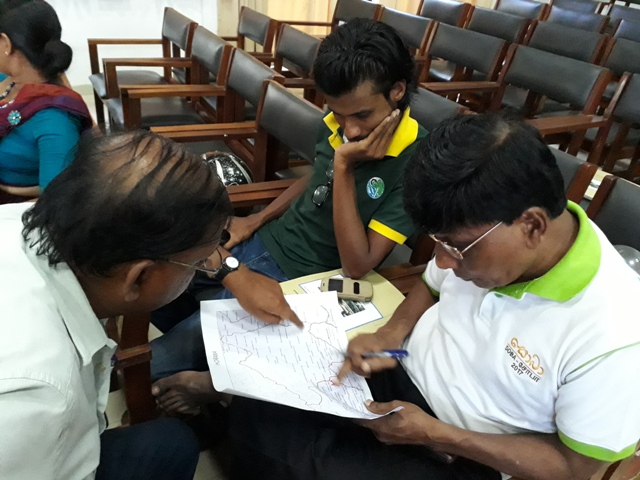From Kelani River Basin to Kalu Ganga River Basin
Based on the success of bringing different stakeholder groups together for river basin management and conservation in the Kelani River Basin through the Kelani River Multi-Stakeholder Partnership (KRMP, where IUCN played a key role in developing the strategy and management approach (https://db.tt/EwnjTGB7), the National Water Supply and Drainage Board (NWSDB) took the initial steps to start a similar project focusing the Kalu Ganga River Basin.

Group work
Photo: ©IUCN\Dinithi Samarathunga
Kalu Ganga, which is the second largest river basin in Sri Lanka, originates from the Adam’s Peak and falls to the Indian Ocean at the Kalutara District. Covering a breadth of 2,766km2 the river basin is home to a large population and provides many services such as water for drinking, agriculture, industries and many more. The new Government proposals will expand the industry in the basin and the road constructions proposed will also modify the hydrology.
The preliminary awareness and fact-finding meeting on introducing a multi-Stakeholder Action Plan development approach to Kalu River Basin was held on 19 September 2017 at the Kalutara District Secretariat under the leadership of Mr U. D. C. Jayalal, District Secretary with the participation of Divisional Secretaries within the Kalu Ganga basin and other stakeholder agencies. There were around 160 participants from 18 DS Divisions that were closely linked to the river and the basin. Dr Ananda Mallawatantri, Country Representative of IUCN Sri Lanka and Ms Dinithi Samarathunga, Project Officer Kelani, IUCN Sri Lanka participated.
Dr Mallawatantri presented the proposed Multi-Stakeholder Partnership approach based on the “Medium to Long-term Strategy and Action Plan of the Kelani River Multi-Stakeholder Partnership.” In order to demonstrate the usefulness, he also facilitated the session on “issue identification” using google based Divisional Secretary level maps. The issues identified by participants included floods, sand mining, river bank erosion due to man-made and natural processes, quarry sites, mismanaged animal husbandries, industrial discharges, poor solid waste management, misuse of fertilizers and lack of awareness of best practices. It was clear that any one given agency could provide a total solution for the issues identified and the use of a multi-stakeholder approach was accepted and endorsed by the participants.
